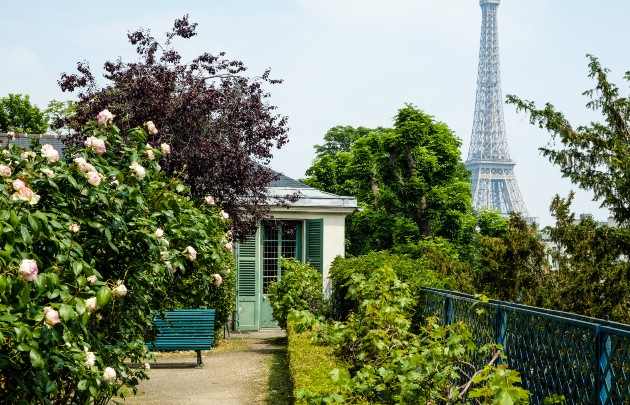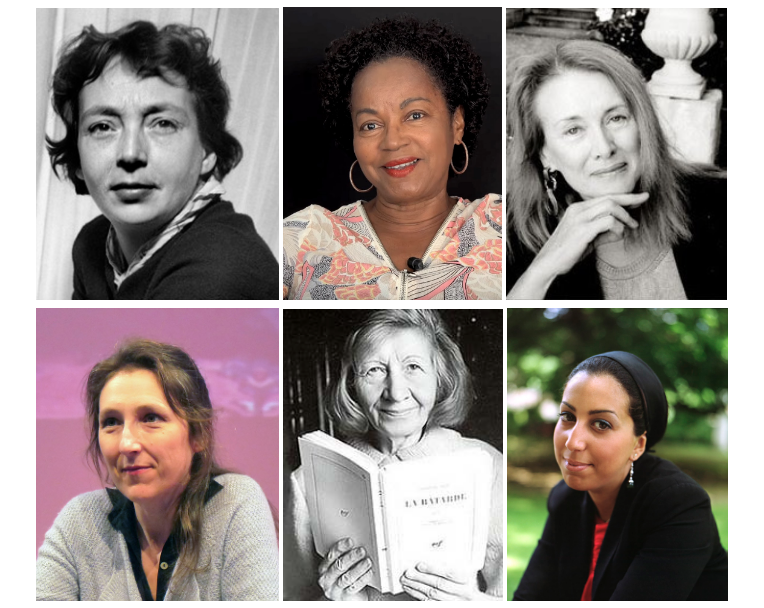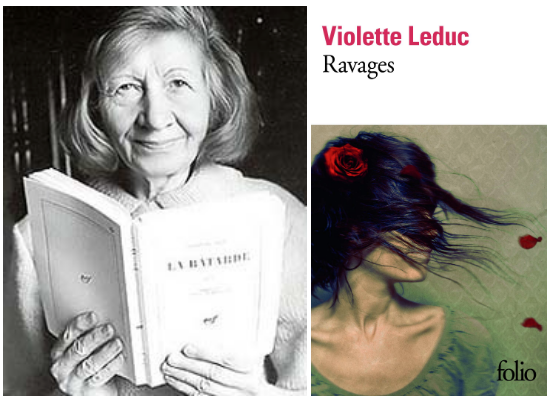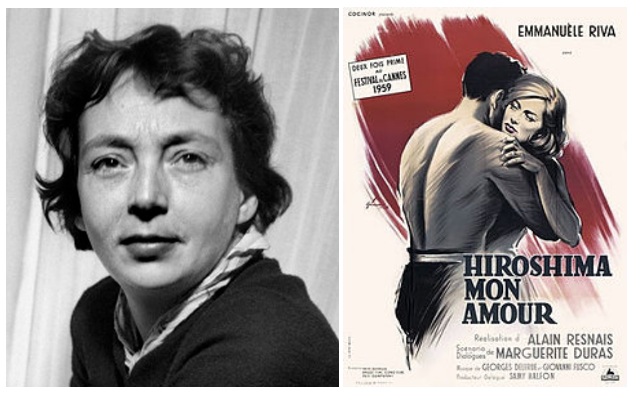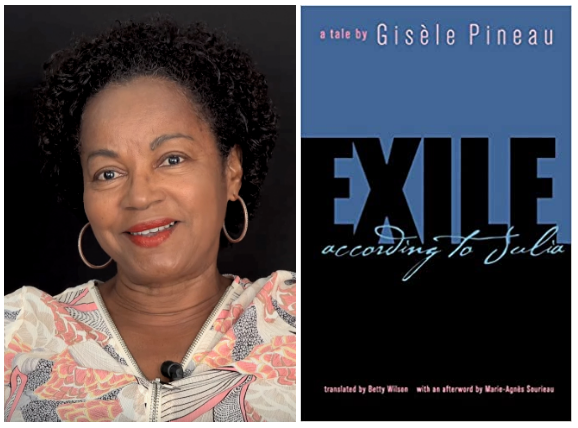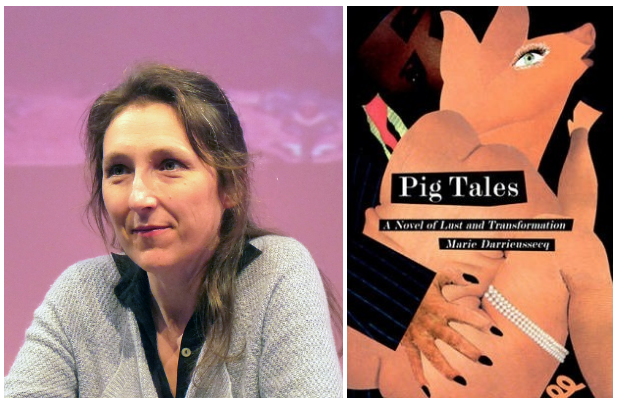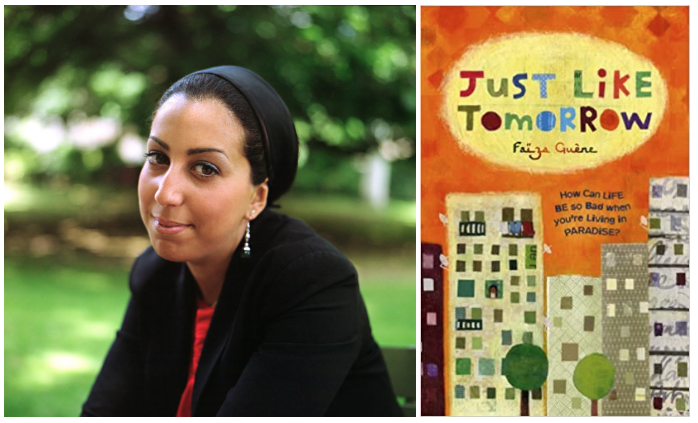Paris’s literary traditions go back hundreds of years and countless writers have lived across the city and been inspired by it and its residents. Some of these are commemorated by plaques, while others are have been converted into museums. Visiting these former residences of writers in Paris, even from the outside, provides fascinating insight into their lives and works.
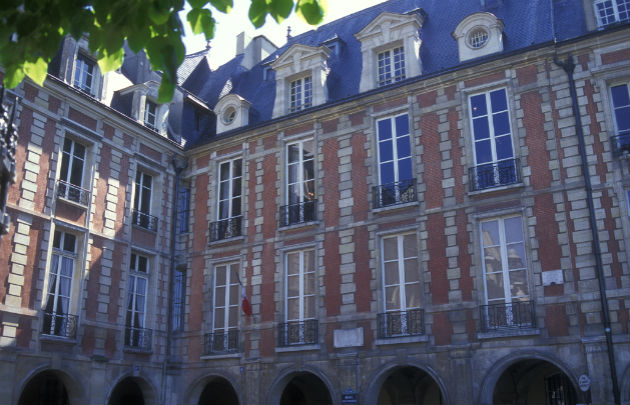
Maison de Victor Hugo. Paris Info
Victor Hugo
Maison de Victor Hugo, 6 Place des Vosges, 75004
One of France’s most beloved authors lived in an apartment on Place des Vosges for 16 years from 1832 to 1848. It was here where Hugo worked on some of his most famous works, from novels (Les Miserables) to plays (Marie Tudor) and collections of poems (Beams and Shadows, The Legends of the Centuries). Converted into a museum run by the City of Paris, the Maison de Victor Hugo displays personal artifacts of the author and sheds light into life of the 19th century.

Maison de Balzac and top photo: Paris Info
Honoré de Balzac
Maison de Balzac, 47 Rue Raynouard, 75016 Paris
Hidden away on the “edge” of what was the village of Passy in the current day 16th district of the city, a countryside ambiance continues to prevail at this cottage lived in by Honoré de Balzac from 1840 to 1847. It was here where he edited La Comedie humaine and worked on La Rabouilleuse, Une ténébreuse affaire, La Cousine Bette, among others. Another museum of the City of Paris, since 1971 it has displayed manuscripts, original editions and other memorabilia linked to the writer.
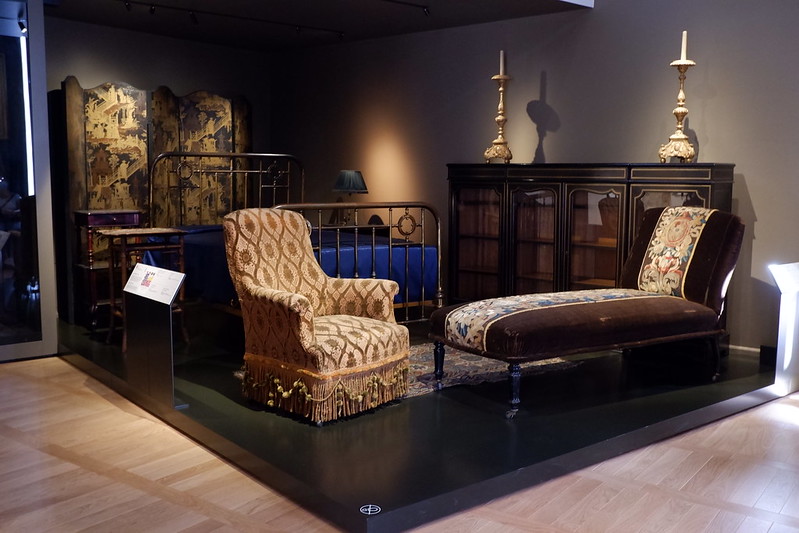
Marcel Proust’s bedroom at the Musée Carnavalet
Marcel Proust
102 Blvd Haussmann, 75008
Proust spent much of his childhood in various apartments around the chic Parc Monceau. After his parents died he moved to this nearby apartment, which had belonged to his maternal uncle. He lived here from 1906 to 1919 and it is where he wrote much of his opus In Search of Lost Time. Now a bank, a plaque on the wall commemorates Proust’s time here. Although you can’t visit the interior of this elegant building, you can get a glimpse of the author’s bedroom, with furniture and other personal affects, on display in the Musée Carnavalet.

Plaque for Oscar Wilde on l’Hotel, Mu/CC
Wilde, Wolfe, Borges
L’Hôtel, 13 rue des Beaux Arts, 75006
Now a luxury hotel, this once down and out establishment of the Left Bank has housed a variety of writers. Having fled England for France in 1897, Irish playwright and poet Oscar Wilde was staying at this hotel when he passed away on 30 November, 1900. This is commemorated by a plate on the outside of the building and Wilde’s final resting place is the Pere Lachaise cemetery. English writer Thomas Wolfe also lived here for a year in 1925 and later in the century Argentinian writer Jorge Luis Borges regularly stayed at the hotel between 1977 and 1984.
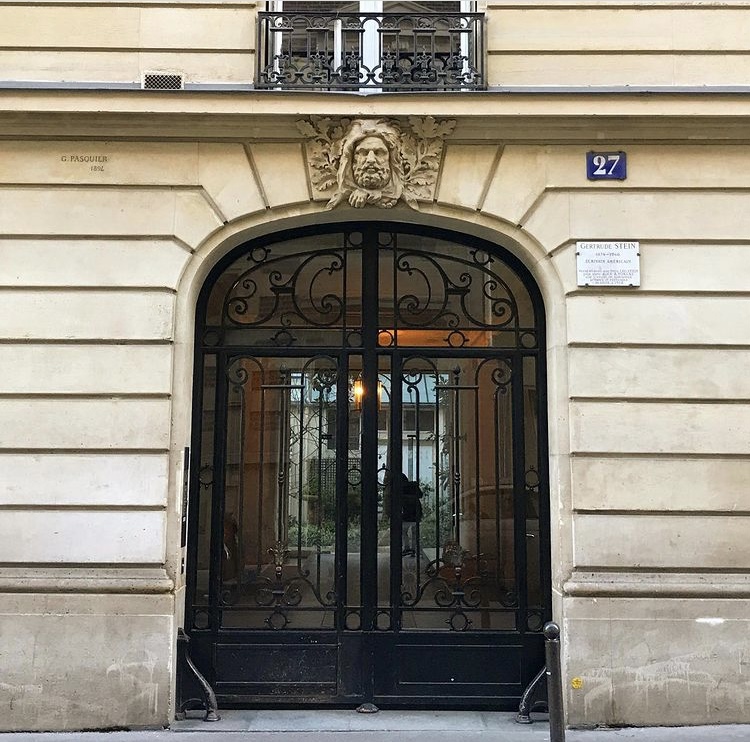
Gertrude Stein’s apartment on rue Fleurus
Gertrude Stein
27 rue Fleurus, 75006
One of the most important cultural addresses of the early 20th century, Gertrude Stein and her brother Leo, then Alice B. Toklas, lived in an apartment at this Left Bank address from 1903 to 1937. It was here where Stein held her famous literary salons and worked on her books here including The Autobiography of Alice B. Toklas, published in 1933. You can observe a plaque dedicated to her above the building’s entrance.
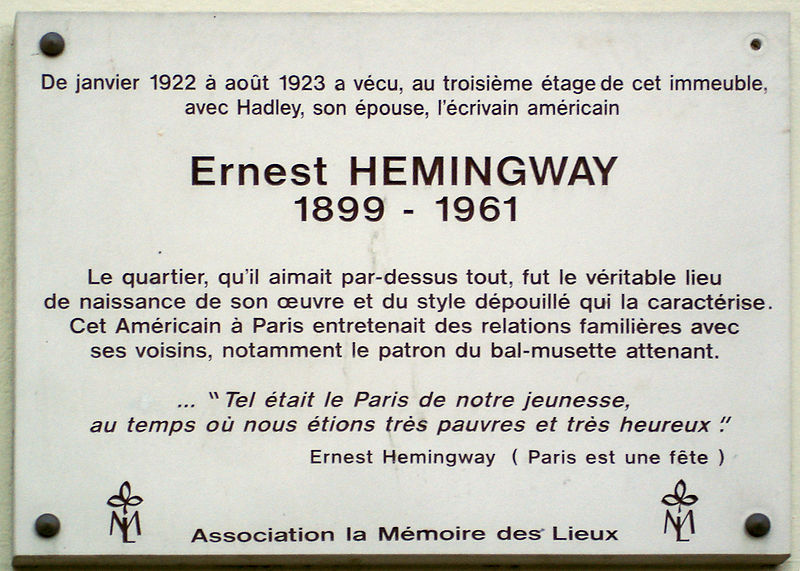
Hemingway Plaque on Rue Cardinal Lemoine. FLLL / CC
Ernest Hemingway
74 Cardinal Lemoine, 75005, 113 rue Notre-Dame-des-Champs, 75006, 6 rue Férou, 75006 and 69 rue Froidevaux, 75014
When they arrived in Paris, Ernest Hemingway and his first wife, Hadley, lived in a tiny apartment behind the Pantheon on rue Cardinal Lemoine from January 1922 until August 1923. He described this drafty residence in his memoir A Moveable Feast. There is also a commemorative plaque on the wall of the building. They later lived on Notre-Dame-des-Champs, near our Paris School, the Luxembourg Gardens and his favourite hangout, La Closerie des Lilas, in a long dusty flat above a sawmill and where Ezra Pound also had a studio. He stayed in the area when he moved in with his second companion, Pauline Pfeiffer, first living on the other side of the park on rue Férou and then further south in the Montparnasse district on rue Froidevaux.
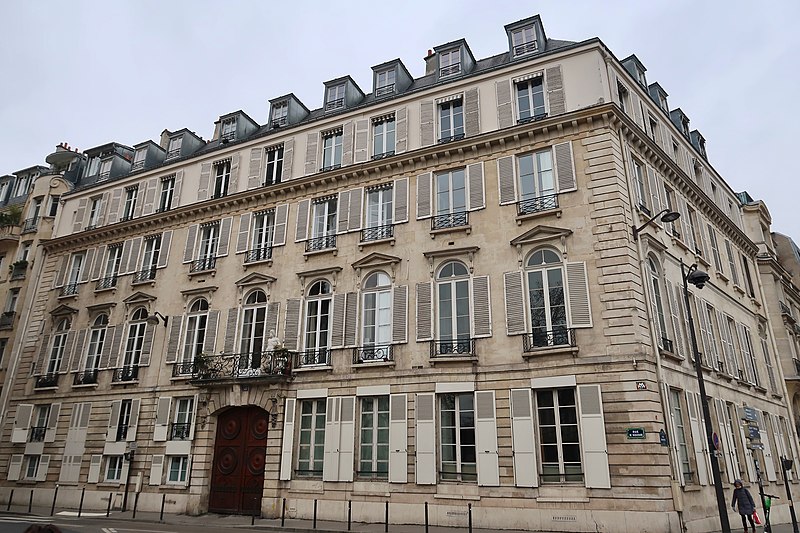
58 rue de Vaugirard. Celette / CC
Scott and Zelda Fitzgerald
14 rue de Tilsitt, 75008 and 58 rue Vaugirard, 75006
The Fitzergeralds lived in various apartments in Paris, both on the Right and Left Bank of the city. When they first moved to Paris in 1925, they lived on a small side street, rue de Tilsitt, in the 8th arrondissement and around the corner from the Arc de Triomphe. They later crossed over to the Left Bank, where most of their friends were living, and in 1928 took up an apartment on rue de Vaugirard, near the Luxembourg Gardens.
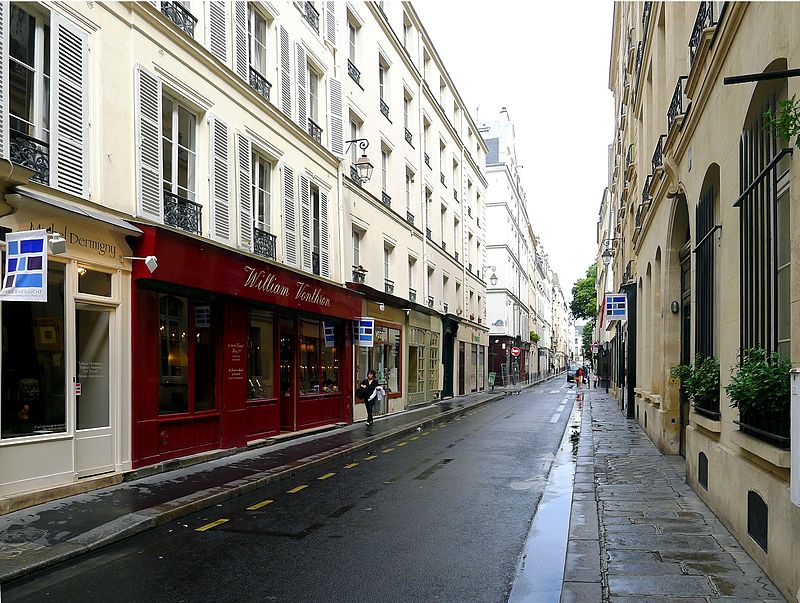
Rue de Verneuil. Mbzt / CC
James Baldwin
Rue de Verneuil, 75007
This narrow street of the Saint Germain neighborhood is now famous for bearing the house of iconic French singer Serge Gainsberg, however, it once held several third-rate hotels. It was in these that James Baldwin lived during his early years in Paris. From here it was a short walk to the Café de Flore, popular with writers of the era and a favorite of Baldwin’s.
Looking to be inspired in your own writing in Paris? Advance your craft during our one-year Master’s in Creative Writing in Paris. Learn more about the programme here.
